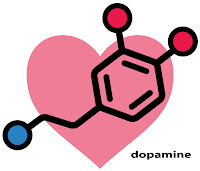Membrane proteins.
 |
| Cell membrane |
A membrane protein is a protein molecule that is attached to, or associated with the membrane of a cell or an organelle. More than half of all proteins interact with membranes.
 |
| Illustration of a Eukaryotic cell membrane |
Biological membranes consist of a phospholipid bilayer and a variety of proteins that accomplish vital biological functions. Structural proteins are attached to microfilaments in the cytoskeleton which ensures stability of the cell. Cell adhesion molecules allow cells to identify each other and interact. Such proteins are involved in immune response, for example. Membrane enzymes produce a variety of substances essential for cell function. Membrane receptor proteins serve as connection between the cell's internal and external environments. Finally, transport proteins play an important role in the maintenance of concentrations of ions. These transport proteins come in two forms: carrier proteins and channel proteins. Carrier proteins are involved in using the energy released from ATP being broken down to facilitate active transport and ion exchange. These processes ensure that useful substances are able to enter the cell and that toxic substances are pumped out of the cell.
 |
Integral membrane protein
E=extracellular space; P=plasma membrane; I=intracellular space |
 |
Schematic representation of transmembrane proteins 1. a single transmembrane α-helix (bitopic membrane protein) 2. a polytopic α-helical protein 3. a transmembrane β barrel |
Integral membrane proteins (IMPs) are permanently attached to the membrane. Such proteins can be separated from the biological membranes only using detergents, nonpolar solvents, or sometimes denaturing agents. They can be classified according to their relationship with the bilayer:- Transmembrane proteins (TMs) span the entire membrane. The transmembrane regions of the proteins are either beta-barrels or alpha-helical. The alpha-helical domains are present in all types of biological membranes including outer membranes. The beta-barrels were found only in outer membranes of Gram-negative bacteria, lipid-rich cell walls of a few Gram-positive bacteria, and outer membranes of mitochondria and chloroplasts.
- Integral monotopic proteins are permanently attached to the membrane from only one side.
Three-dimensional structures of only ~160 different integral membrane proteins are currently determined at atomic resolution by X-ray crystallography or NMR due to the difficulties with extraction and crystallization. In addition, structures of many water-soluble domains of IMPs are available in the PDB. Their membrane-anchoring α-helices have been removed to facilitate the extraction and crystallization. IMPs include transporters, channels, receptors, enzymes, structural membrane-anchoring domains, proteins involved in accumulation and transduction of energy, and proteins responsible for cell adhesion.
 |
| some known structures of β-barrel membrane proteins |
G protein-coupled receptors (GPCRs), also known as seven-transmembrane domain receptors, 7TM receptors, heptahelical receptors, serpentine receptor, and G protein-linked receptors (GPLR), comprise a large protein family of transmembrane receptors that sense molecules outside the cell and activate inside signal transduction pathways and, ultimately, cellular responses. G protein-coupled receptors are found only in eukaryotes, including yeast, choanoflagellates.
 |
V-ATPase proton pump
VI-subunits (water soluble) orange-green,
Vo-subunits (membrane bound) blue-purple,
rotor c light blue |
V-ATPase is a multi-subunit 900 kDa protein complex made up of a watersoluble ATPase domain. It’s function is to translocate protons across the bilayer, by coupling ATP-hydrolysis in the water-soluble part to a rotational motion in the membrane. The activity is sensitive to glucosylceramide in the membrane. More specifically, a 16 kDa subunit of the rotor, called c, appears to interact with GlcCer.
 |
| Two classes of transmembrane proteins |
Mesophase: The phase of a liquid crystalline compound between the crystalline and the isotropic liquid phase.
Lamellar phase: A lamellar organisation of phospholipids that are packed as a bilayer with hydrophobic acyl tails inwardly directed and polar head groups on the outside surfaces. It is this bilayer that forms the basis of membranes in cells, though in most cellular membranes a very substantial proportion of the area may be occupied by integral proteins.
video: Crystallizing Membrane Proteins for Structure Determination using Lipidic Mesophases, Caffrey & Porter
Lipidic Cubic Phase (LCP): A micellar cubic phase is a lyotropic liquid crystal phase formed when the concentration of micelles dispersed in a solvent (usually water) is sufficiently high that they are forced to pack into a structure having long-ranged positional (translational) order. For example, spherical micelles a cubic packing of a body-centred cubic lattice. Normal topology micellar cubic phases, denoted by the symbol I1, are the first lyotropic liquid crystalline phases that are formed by type I amphiphiles. The amphiphiles' hydrocarbon tails are contained on the inside of the micelle and hence the polar-apolar interface of the aggregates has a positive mean curvature, by definition (it curves away from the polar phase). Inverse topology micellar cubic phases (such as the Fd3m phase) are observed for some type II amphiphiles at very high amphiphile concentrations. These aggregates, in which water is the minority phase, have a polar-apolar interface with a negative mean curvature. The structures of the normal topology micellar cubic phases that are formed by some types of amphiphiles (e.g. the oligoethyleneoxide monoalkyl ether series of non-ionic surfactants are the subject of debate. Micellar cubic phases are isotropic phases, but are distinguished from micellar solutions by their very high viscosity. When thin film samples of micellar cubic phases are viewed under a polarising mcroscope they appear dark and featureless. Small air bubbles trapped in these preparations tend to appear highly distorted and occasionally have faceted surfaces.
 |
| Lipid raft |
 |
| Membrane with membrane proteins |





























